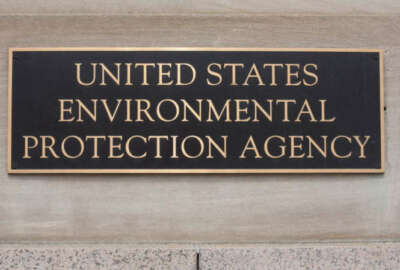
On Trump’s NDAA wishlist: higher VSIP payments for all feds, an industry exchange program
The Trump administration wants to increase early retirement and separation incentives from a cap of $25,000 to $40,000 for all civilian federal employees. It al...
As agencies consider how they’ll shrink the size of their workforce to comply with the president’s priorities and budget, the Trump administration wants to increase early retirement payments for all civilian employees.
The administration’s proposal would increase the maximum amount that agencies could offer in Voluntary Separation Incentive Payments (VSIP) to its employees from $25,000 to $40,000. The administration sent Congress this proposal last month to be included in the 2018 National Defense Authorization Act.
The House Armed Services Committee already included the same boost to VSIP payments for civilian Defense Department employees in its version of the 2018 defense authorization act.
The decision came after Congress originally approved a pilot program last year that increased the VSIP for DoD civilian employees in 2017. Now the House committee wants to extend those incentives until 2021.
According to the White House plan, the Labor Secretary would adjust the $40,000 figure for inflation in March of each year. It would also be tied to the consumer price index.
Congress hasn’t adjusted maximum VSIP payments since lawmakers first authorized these incentives in 2002.
The House is beginning debate on the 2018 NDAA this week. A member of the House would need to introduce an amendment that authorizes higher VSIP payments governmentwide. As of Wednesday afternoon, no member had offered an amendment extending higher separation incentives.
The administration’s desire to boost early out payments shouldn’t come as a major surprise. Agencies often use Voluntary Early Retirement Authority (VERA) or VSIP incentives to encourage more voluntary attrition as they downsize or restructure.
Though the Office of Management and Budget did not target a specific number of positions for VERA/VSIP, it did encourage agencies to consider how they could use those incentives to gradually decrease the size of the federal workforce as they begin government reorganization efforts.
The Office of Personnel Management in March released a new “workforce reshaping” guide to help agencies prepare for budget reductions and restructuring activities.
The Environmental Protection Agency is already planning to offer VERA/VSIP incentives for at least 1,200 positions by September in effort to cut 8 percent of its workforce by the end of this fiscal year.
Industry exchange program
The administration also wants to create an industry exchange program that would allow some federal employees to temporarily work at a private sector corporation, association or partnership in the science, technology, engineering or mathematics (STEM) fields.
In return, employees from these external organizations would also temporarily lend their expertise to a federal agency.
“Many agencies increasingly need specialized talent that is not commonly found in the federal government to work on specific projects or initiatives,” the administration wrote in its proposal. “This is particularly the case in science, technology and other fields where rapidly evolving skill-sets present challenges. While programs exist that provide for the exchange of ideas and talent among the federal government, state and local governments and academia, the programs do not include the private sector.”
Federal employees could spend no more than two years at the external organization, but agency leaders could decide to extend the assignment for another two years. As a condition of accepting the assignment, the employee must agree to return to his or her agency after completing the detail.
The program would apply to any federal employee in the executive branch, except for non-career appointees, limited term appointees or limited emergency appointees.
Those who take on these assignments would be considered as either on “detail to a regular work assignment in the employee’s federal agency” or “on leave without pay from the employee’s position in the federal agency,” the administration’s proposal said.
Federal employees considered “on leave without pay” at an external organization can’t receive a salary that is higher than their original salaries.
Employees in the exchange program will continue to receive federal health and life insurance benefits, and their time spent in the private sector will count toward their federal annuities.
The administration also submitted this proposal to Congress last month, with the intent that it be included in the 2018 NDAA.
The industry exchange program isn’t a new concept.
Some agencies have deployed public-private exchanges on a small scale to fill critical needs.
OPM, for example, brought on Clif Triplett from industry to serve as the agency’s senior cyber and information technology adviser for a little more than a year.
The Homeland Security Department has previously said it’s exploring the idea of creating an industry exchange or loaned executive program as an incentive to attract new talent to the department, particularly to cybersecurity positions and others that have been difficult to fill.
Lawmakers have proposed similar exchange programs to improve recruitment and retention efforts for specific agencies.
Sen. Jon Tester (D-Mont.), for example, recently included a provision in the Better Workforce for Veterans Act, which authorized rotational assignments for VA employees to the private sector.
VA said it supported the concept of the program, but citing the administration’s industry exchange idea, said it would rather see Congress implement a governmentwide initiative, rather than one specific to the department.
Copyright © 2024 Federal News Network. All rights reserved. This website is not intended for users located within the European Economic Area.
Nicole Ogrysko is a reporter for Federal News Network focusing on the federal workforce and federal pay and benefits.
Follow @nogryskoWFED





